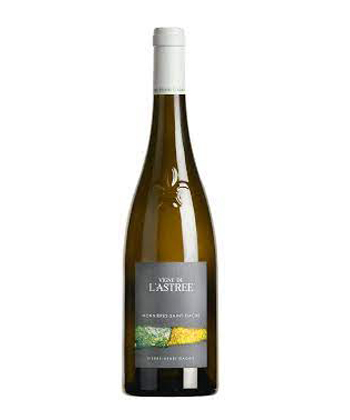The Loire Valley is perhaps best known for the ever-so-popular Sauvignon Blanc, produced in Sancerre and Pouilly-Fumé. Second to that is Chenin Blanc, another grape often associated with the region. These wines earned their popularity, but there’s an underrated Loire Valley varietal that should be on every wine lover’s radar: Melon de Bourgogne, the grape used to make Muscadet. In past years, Melon was considered a neutral wine lacking in complexity, but over the years, with a return to better farming practices, the wines have gained a new following.
First, it’s worth clearing up a common misconception. Melon de Bourgogne, the grape varietal used to produce Loire Valley Muscadet, is not to be confused with Muscat (Moscato), which is used to produce a dry, medium-sweet style of wine. In fact, the two grapes are not related.
Melon de Bourgogne has notes of citrus and apple with high acidity. Because of these factors, it is often overlooked by wine professionals and consumers. However, this reputation is beginning to change, as a group of winemakers work to popularize the grape through exceptional winemaking and viticulture practices. “We are a bunch of winegrowers trying to make something different, and it works,” says Fred Niger of Domaine de l’Ecu. At the winery, Niger practices amphora vinification, vinification by gravity, hand harvesting, and adds little to no SO2 for a natural approach — producing high- quality Muscadet that can be aged. “We work in the same way as many of our friends located in Burgundy, Provence, and Bordeaux,” he says.
In 2017, over 500 vignerons joined together to create Vins de Muscadet, a portal dedicated to the promotion of Muscadet and the wine’s versatility and beauty.
Melon de Bourgogne is grown in the Loire Valley and shines its brightest in Pays Nantais, near the city of Nantes. The region comprises five main appellations: Muscadet Coteaux de la Loire, Muscadet Côtes de Grandlieu, Coteaux d’Ancenis, Muscadet, and Muscadet Sèvre-et-Maine — the latter of which is the largest producer of Muscadet in the Loire. A region known for its fuller-bodied, “sur lie” wines, the Loire Valley is located on the central western coast of France, where around 80 percent of the world’s Muscadet is produced.
Muscadet Sèvre-et-Maine is now considered the top appellation for Muscadets produced in the Loire. And although the region was designated as an appellation d’origine contrôlée (AOC) in 1936, its wines still have not received the same accolades as Sauvignon Blanc-producing appellations in the Loire Valley. It is a very versatile wine that can range from light-bodied to fuller-bodied styles, and is easily paired with a vast array of food, including oysters, shellfish, and poultry.
Niger is one of the pioneers of quality Muscadet winemaking. The winery has been practicing organic farming for over 40 years and received its Demeter biodynamic certification in 1998. Niger’s attention to Muscadet is in an effort to dismantle the variety’s reputation as a mass-market wine.“ “Muscadet was underrated the last few decades because of the winemakers, high yields, harvesting machines, chemicals, and modern oenology” he says. “Fortunately, it’s moving in a good way. It has been a hard job making people understand that Melon de Bourgogne can be a fascinating grape variety.”
But that work is proving to pay off; Domaine de l’Ecu is now a premier player in Muscadet, with its wines now served in Michelin-starred restaurants and its commitment to quality inspiring up-and-coming wineries in the region.
Pierre-Henri Gadais of Domaine de la Combe represents the next generation of Muscadet producers. His domaine is currently in the process of obtaining its organic certification, a goal of Gadais’ since 2016 and a promising prospect for the appellation. Currently, around 80 percent of Gadais’s wines are exported and have found a market in the United States, Canada, and Sweden.
Only time will tell if Muscadet will fare well in comparison with its well-known counterparts all over the Loire, but the bottles below are sure to edge it closer to the spotlight.
5 Muscadets to Try
Domaine de la Pépière Muscadet ‘La Pépière’ 2020 ($20)
This wine is lively and refined, with great acid and aromas of pear and almond that complement each other.
Domaine la Foliette Clos de la Fontaine Muscadet 2019 ($20)
2019 was a hot year in France, and this Muscadet shows the added benefits of the sun’s rays. The resulting wine is rich and creamy, with acid that plays on the palate and crisp notes of green apple.
Domaine de l’Ecu Muscadet Sèvre-et-Maine Sur Lie ‘Granite’ 2018 ($20)
This certified organic and biodynamic wine shows its age — in a good way. Aged on the lees for no less than 15 months, it is textured and layered with flavor and acid.
André-Michel Brégeon Muscadet Sèvre-et-Maine Sur Lie 2019 ($22)
Zesty and pure aromas of citrus are coupled with juicy and ripe flavors of white peaches and lychees in this refreshing bottling.
Domaine de la Combe Vigne de l’Astrée Muscadet 2017 ($30)
Full of yeast, butter, lime, and dried apricots, this wine drinks like a still Champagne. It is complex and structured and would pair well with a variety of foods, including pork and poultry. This is a wine to be aged.





